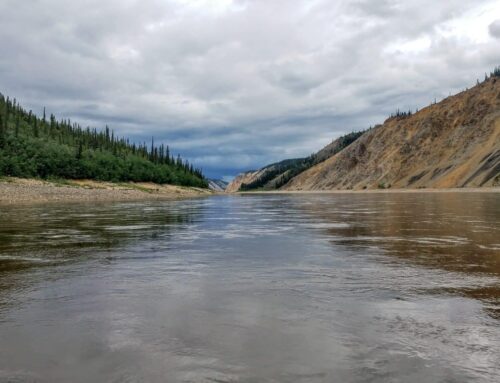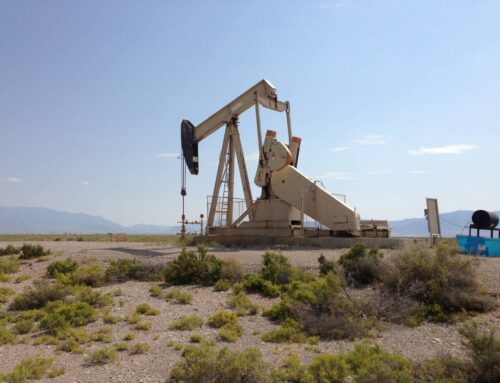View/Download this article in PDF format.
New Mexico is one of the most heavily mined states in the country, producing large amounts of perlite, copper, and other hardrock minerals. Much of this mining has and continues to occur on federally owned public lands.
Over the years the face of mining in New Mexico has changed dramatically, from the pick and axe, to heavily mechanized large-scale operations. Yet despite these changes, the laws that govern mining operations have not changed in more than a century. Under the 138 year old Mining Law of 1872, valuable taxpayer lands and minerals are virtually given away to international mining conglomerates that then amass enormous profits from mining, or simply turn around and sell taxpayer owned land to the highest bidder. To add insult to injury, these same mining companies often abandon their mines once they are no longer profitable, or declare bankruptcy, sticking taxpayers with the costly tab for mine cleanup.
The Congressional Budget Office (CBO) estimates the value of hardrock minerals produced from our country’s public lands is more than $1 billion annually. Despite the high value of minerals produced from New Mexico’s and other western states’ public lands, more than 161,000 mines are currently left abandoned by mining companies, leaving the government to pay for cleanup after minerals have been extracted. The Environmental Protection Agency (EPA) estimates that some of these mines will cost taxpayers more than $50 million each to cleanup, and the total cost of remediating abandoned mines nationwide could cost upwards of $70 billion. Other extractive industries such as oil and gas pay royalties for the resources they extract from federal lands and waters, and the hardrock mining industry should not receive special treatment. Mining companies must compensate taxpayers for extracting these resources and provide a revenue stream to cleanup our public lands.
New Mexico State Mining Overview
New Mexico is one of the leading producers of nonfuel minerals in the U.S., ranking first in potash, perlite, and zeolite production, while also producing large amounts of copper, molybdenum, gold, and silver. In 2007, mineral production was valued at $2.2 billion, higher than the $2.1 billion produced the previous year.
Although there is no royalty for hardrock mining on federal lands, New Mexico generally charges a royalty that follows a net smelter returns approach. A net smelter returns royalty is charged as a percentage of the mineral’s gross value. The state does permit mining companies to deduct transportation and mineral processing costs from royalty payments, but not mineral extraction costs. The Commissioner of Public Lands decides the royalty rates on a case by case basis; however, the rate cannot be less than 2%.
New Mexico Giveaways
New Mexico has a long history of selling mineral patents to mining companies for little or nothing, and failing to collect fair royalties for minerals mined on public lands.
-
In 1986, the federal government sold 17,000 acres for just $42,500. Less than a month later, the patent holders turned around and sold the land to large oil companies for more than $37 million.
-
Since 2003, New Mexico has experienced a 68 percent increase in total mining claims, with a reported 12,692 mining claims in New Mexico for 2008. Mining claims grew for gold, silver, and copper during this period because the value of metals increased. Mining claims also rose for uranium although uranium production has not yet begun.
- Under the 1872 Mining Law, private entities now own more than 170,231 acres of New Mexico’s formerly public land, purchased for no more than $5.00 per acre.
- New Mexico’s Chino Mine, owned by Freeport-McMoRan, includes 113,258 acres of patented public land. The mine’s annual production averaged around 200 million pounds of copper and up to 1 million pounds of molybdenum through 2008, when operations were temporarily suspended. Since 1910, the Chino mine has cost taxpayers millions in foregone royalties, including nearly $85 million in 2007 alone.
- In 2006, Congress granted mining companies 2,356 acres worth of mineral patents.
Billions in Cleanup Costs
There are an estimated 800 abandoned hardrock mine sites on state land in New Mexico with a reported 15,000 features that cause a considerable threat to public health and safety.
- Complete cleanup of the Santa Rita Pit — a single piece of New Mexico’s Chino Mine — is estimated to cost up to $4 billion. However, because the Chino Mine company already agreed to pay $394 million for partial cleanup, they were exempted from total cleanup responsibility by the state of New Mexico.
- In 2002, Molycorp planned to assign around $152 million for their Questa Mine site cleanup. However, upon further investigation by the EPA, potential cleanup costs may be as much as $400 million for the site.
- According to the Government Accountability Office, there are roughly 4,000 abandoned mines located on federal land in New Mexico, many of which have the potential to cost taxpayers millions of dollars to cleanup.
General Mining Law of 1872 Must be Reformed
The General Mining Law may have made sense 138 years ago, but continuing to uphold these outdated provisions for mining companies is bad fiscal policy and is causing costly damage to our nation’s public lands and waters. The failure to modernize this law continues to allow billions of dollars worth of minerals on federal land to be claimed by mining corporations for no more than $5 per acre, and sticks New Mexicans and all U.S. taxpayers with the expense of costly mine cleanup. Congress must act now to bring this archaic law into the 21st century, by charging fair market value for public lands and minerals, and holding mining companies responsible for their own reclamation costs.
For more information, please contact Autumn Hanna at (202) 546-8500 x112 or autumn [at] taxpayer.net.











Get Social